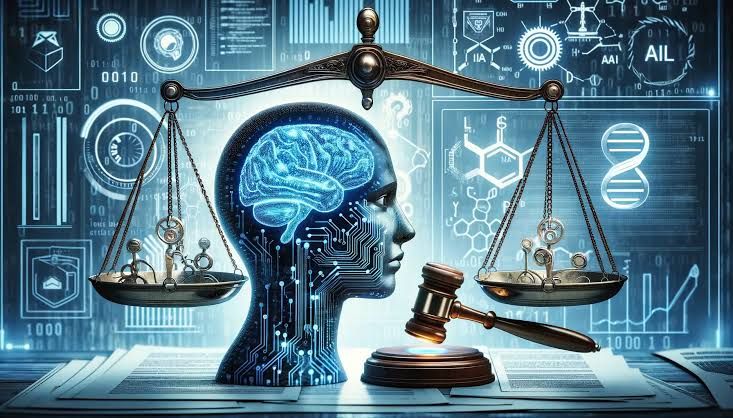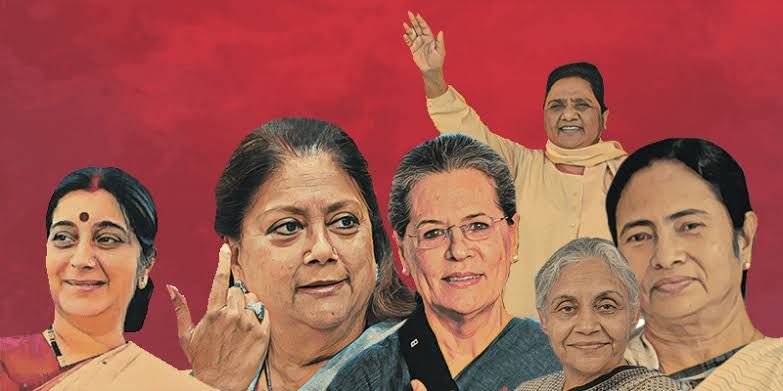Author: LIPIKA SHARMA a student at Banasthali University
Headline of the Article
Navigating the Legal Complexities of AI in Intellectual Property: Emerging Challenges and Jurisprudence
Abstract
The integration of artificial intelligence (AI) into various sectors has revolutionized technology and business practices. However, its intersection with intellectual property (IP) law presents new legal challenges. This article explores the evolving landscape of AI in IP, examining pertinent legal frameworks, case laws, and emerging issues. It aims to provide a comprehensive understanding of how AI impacts IP rights, offering insights into current debates and potential legal reforms.
To the Point
Artificial Intelligence (AI) is reshaping industries by automating processes and generating creative outputs. This rapid technological advancement raises critical questions regarding the ownership, protection, and enforcement of intellectual property (IP) rights. Traditional IP laws, primarily designed for human creators, are now being tested by AI-generated works and inventions. This article addresses key issues such as authorship, patentability, and copyright infringement in the context of AI, supported by relevant case laws and legal theories.
Use of Legal Jargon
Authorship: The legal recognition of an individual or entity as the creator of a work, conferring rights to control and exploit the work.
Patentability: The qualification of an invention for patent protection, requiring novelty, non-obviousness, and industrial applicability.
Infringement: Unauthorized use of protected IP, violating the rights of the IP holder.
Jurisprudence: The theory and philosophy of law, encompassing case law and judicial decisions.
Doctrine of Equivalents: A legal rule in patent law allowing a court to hold a party liable for patent infringement even if the infringing device or process does not fall within the literal scope of a patent claim but performs substantially the same function in substantially the same way to obtain the same result.
The Proof
AI technologies, such as machine learning algorithms and neural networks, can autonomously generate music, art, literature, and even invent new products. The existing IP legal framework faces significant difficulties in attributing authorship and ownership to AI-generated creations. Here’s a detailed look at the challenges faced and the current state of the legal landscape:
Copyright Law Challenges
One of the most contentious areas is copyright law. Traditionally, copyright protection is granted to works that are original and fixed in a tangible medium of expression, provided that they are created by a human author. AI-generated works, however, complicate this framework. The United States Copyright Office (USCO) has consistently refused to register works created solely by AI, as seen in the case of a visual artwork titled “A Recent Entrance to Paradise,” which was generated by AI and submitted for copyright registration. The USCO’s refusal was based on the absence of human authorship, highlighting a fundamental gap in existing copyright law when applied to AI-generated works.
Similarly, in the United Kingdom, the Copyright, Designs and Patents Act 1988 provides a unique solution by stating that for computer-generated works where there is no human author, the person who made the necessary arrangements for the creation of the work shall be deemed the author. However, this approach is not universally adopted, leading to inconsistencies in the protection of AI-generated works across different jurisdictions.
Patent Law Issues
In the realm of patents, AI’s role as an inventor is highly debated. Patent law typically requires an inventor to be a natural person, which poses a problem for AI-generated inventions. The case of Dr. Stephen Thaler’s AI system, DABUS, serves as a critical example. Dr. Thaler filed patent applications listing DABUS as the inventor in multiple jurisdictions, including the United States, Europe, and Australia. While the European Patent Office (EPO) and the United States Patent and Trademark Office (USPTO) rejected these applications, stating that an inventor must be a natural person, the Australian Federal Court took a different approach. It ruled in favor of recognizing AI as an inventor, arguing that the law should adapt to technological advancements. This ruling, although not widely accepted, signals a potential shift in how patent laws may evolve to accommodate AI-generated inventions.
Trademark Considerations
Trademarks, while less directly affected by AI, still encounter challenges due to AI’s role in brand creation and management. AI systems can generate logos, slogans, and even brand names, raising questions about ownership and rights. For instance, if an AI creates a unique logo, who holds the trademark rights? Current laws generally attribute ownership to the entity that ”ommissioned the AI, but this area remains underdeveloped and requires further legal clarity.
Trade Secrets and AI
AI’s involvement in generating trade secrets also presents unique issues. Trade secrets are defined by their secrecy and economic value, typically resulting from substantial human effort and ingenuity. However, when AI autonomously develops trade secrets, such as new algorithms or business processes, attributing ownership and ensuring protection becomes complex. The traditional framework, which relies on human control and management, needs to evolve to account for AI’s autonomous capabilities.
International Perspectives
Globally, the approach to AI and IP rights varies significantly. In the European Union, the European Commission has been proactive in addressing AI’s impact on IP law. Their “White Paper on Artificial Intelligence” highlights the need for a robust regulatory framework to ensure that AI innovations are adequately protected while balancing ethical considerations. The European Parliament has also called for a common legal framework that addresses AI-generated creations, emphasizing the need for harmonization across member states.
In contrast, the United States has taken a more cautious approach, focusing on maintaining existing legal principles while exploring potential adaptations. The USPTO has conducted public consultations and released reports analyzing the implications of AI on IP law, but comprehensive legislative changes have yet to be implemented.
Ethical and Philosophical Considerations
Beyond legal complexities, AI-generated IP raises ethical and philosophical questions. The notion of creativity and inventiveness, traditionally attributed to human intellect, is challenged by AI’s capabilities. Should an AI’s “creations” be valued and protected in the same manner as human-generated works? These questions are not merely academic but have practical implications for IP law and policy.
Economic Implications
The economic impact of AI-generated IP is significant. Companies investing in AI technologies need certainty regarding the protection and enforcement of IP rights. Without clear legal guidelines, businesses may face challenges in securing investments, commercializing AI-generated products, and defending their IP in legal disputes. Ensuring a robust and adaptable IP framework is crucial for fostering innovation and economic growth.
Case Laws
1. Thaler v. Commissioner of Patents (Australia, 2021)
In this case, Dr. Stephen Thaler filed patent applications listing an AI system, DABUS, as the inventor. The Australian Federal Court ruled in favor of recognizing the AI as an inventor, emphasizing the importance of adapting IP laws to technological advancements. This case marked a significant departure from traditional views, acknowledging that an AI can autonomously create and innovate in ways comparable to human inventors.
2. Naruto v. Slater (9th Cir. 2018)
Although not directly related to AI, this case involved a macaque monkey taking selfies, leading to a lawsuit over copyright ownership. The court ruled that non-human entities cannot hold copyrights, providing precedent relevant to AI-generated works. The decision underscores the current legal perspective that only humans can be recognized as authors under copyright law, posing challenges for AI-generated content.
3. Feist Publications, Inc. v. Rural Telephone Service Co. (1991)
This U.S. Supreme Court case established that copyright protection requires a minimal degree of creativity. AI-generated works challenge this principle, as they raise questions about the nature and threshold of creativity needed for copyright eligibility. The court’s emphasis on human creativity as a criterion for copyright protection complicates the status of AI-generated works, which lack human intervention.
4. Davis v. The Copyright Office (US, 2022)
In this case, a photographer challenged the US Copyright Office’s refusal to register a photograph taken by his AI-powered camera. The court upheld the Office’s decision, reaffirming that copyright law only applies to human-authored works. This case illustrates the persistent legal barriers to recognizing AI as a legitimate author under current copyright frameworks.
5. United States Patent and Trademark Office (USPTO) Decision on AI Inventorship (2020)
The USPTO denied patent applications listing an AI system as an inventor, stating that patent law requires inventors to be natural persons. This decision aligns with similar rulings in other jurisdictions, reflecting a widespread reluctance to depart from traditional human-centric definitions of inventorship. The case highlights the ongoing debate over whether and how patent laws should evolve to accommodate AI-generated inventions.
Conclusion
The integration of AI into creative and inventive processes challenges existing IP frameworks. Courts and legislators worldwide are grappling with the implications of AI-generated works and inventions. The recognition of AI as an author or inventor remains contentious, with significant implications for IP law. Legal reforms may be necessary to address these challenges, ensuring that IP rights adequately reflect the contributions of AI while balancing human creators’ interests.
FAQ
1. Can AI be recognized as an inventor or author under current IP laws?
Generally, current IP laws do not recognize AI as an inventor or author. Courts and IP offices have mostly ruled that only natural persons can hold these titles, but this stance is evolving.
2. What are the implications of AI-generated works for copyright law?
AI-generated works challenge traditional notions of authorship and creativity. The lack of human authorship complicates copyright registration and enforcement, necessitating legal clarity.
3. How do patent laws address AI-generated inventions?
Patent laws require that inventors be natural persons. However, there is growing debate about whether this should change to accommodate AI-generated inventions, as seen in recent cases like Thaler v. Commissioner of Patents.
4. Are there any international guidelines for IP protection of AI-generated works?
Currently, there are no unified international guidelines. Different jurisdictions have varying approaches, reflecting the nascent state of legal consensus on this issue.
5. What potential legal reforms could address AI’s impact on IP law?
Potential reforms include recognizing AI as a co-inventor, establishing sui generis rights for AI-generated works, and clarifying the threshold of creativity for copyright eligibility. These changes aim to balance innovation with fair IP protection.
6. How do current IP laws impact the commercialization of AI-generated works?
The current legal uncertainty can hinder the commercialization of AI-generated works, as businesses may face challenges in securing and enforcing IP rights. Legal clarity would facilitate innovation and investment in AI technologies.
7. What role do policymakers play in addressing the challenges posed by AI in IP law?
Policymakers play a crucial role in updating and refining IP laws to reflect technological advancements. Their decisions will shape the future landscape of IP protection for AI-generated works and inventions.
In conclusion, the intersection of AI and IP law presents complex challenges that require ongoing legal innovation and adaptation. By understanding current jurisprudence and considering potential reforms, stakeholders can better navigate this evolving landscape.



